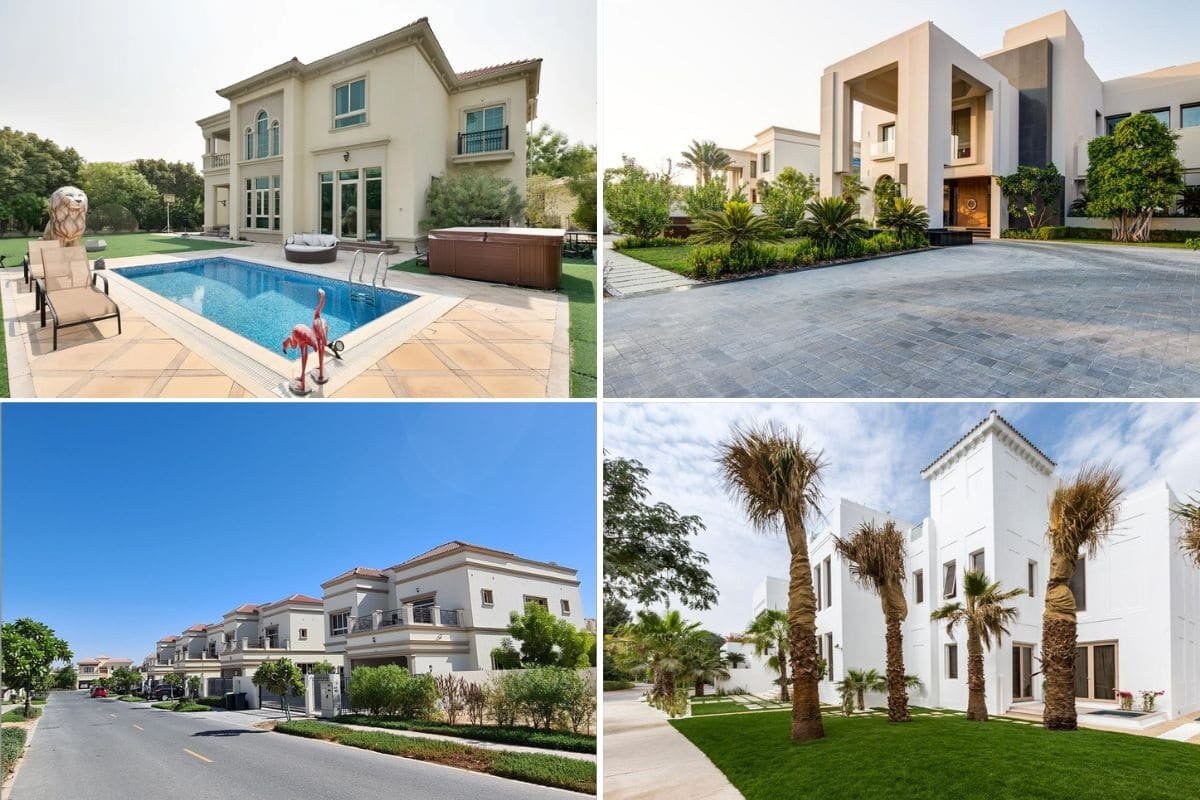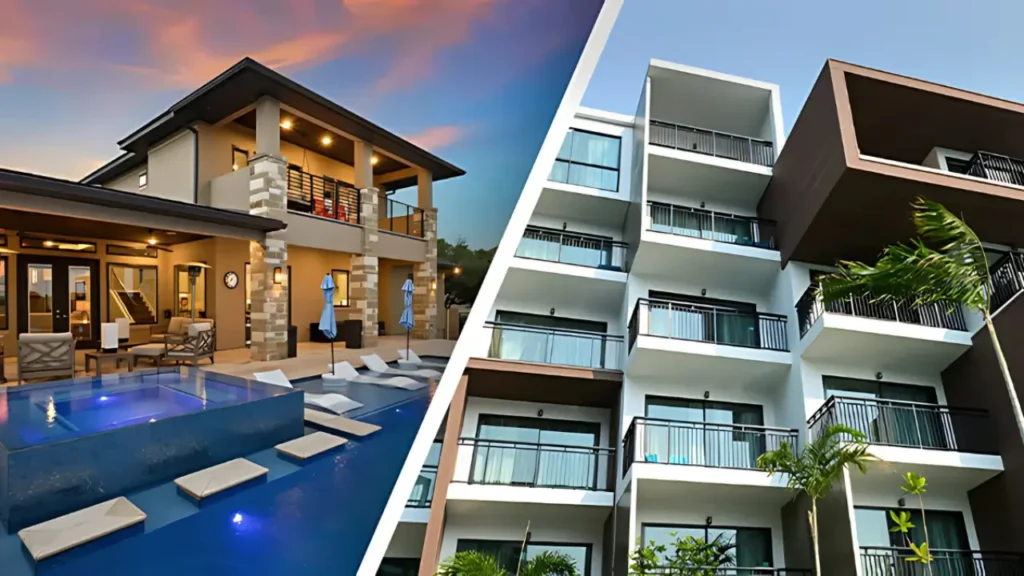
Dubai’s real estate market has always been a beacon for global investors. With stable governance, tax-free income, and a rising population, the city’s rental sector continues to promise lucrative returns. But one question frequently surfaces among investors: Which property type offers better rental yields—apartments vs villas?
The answer isn’t as simple as “one is better than the other.” It depends on multiple factors—location, tenant demographics, maintenance costs, lifestyle preferences, and investment strategy. In this guide, we’ll break down how apartments vs villas perform in terms of rental yields across Dubai, helping you make an informed, data-backed investment decision.
Before comparing apartments vs villas, it’s essential to understand what rental yield means. Rental yield is the annual rental income expressed as a percentage of the property’s purchase price.
Formula:
Rental Yield = (Annual Rent ÷ Property Purchase Price) × 100
For example, if you own a property worth AED 1,000,000 and rent it for AED 80,000 per year, the gross rental yield is 8%.
In Dubai, average rental yields range between 5% to 9%, depending on the area and property type—making it one of the strongest real estate markets globally in terms of ROI.
Apartments are the backbone of Dubai’s rental ecosystem, accounting for the majority of leases. They range from compact studios to luxury penthouses and are found in nearly every major community—from Downtown Dubai to Jumeirah Village Circle (JVC).
Key features of apartments:
Villas represent Dubai’s upscale, spacious living. They cater to families and long-term residents seeking privacy, gardens, and lifestyle amenities. Areas like Arabian Ranches, Dubai Hills, and The Springs are particularly villa-heavy.
Key features of villas:
Let’s examine typical rental yields across property types and popular Dubai communities (2025 estimates).
| Area | Average Apartment Yield | Average Villa Yield |
|---|---|---|
| Dubai Marina | 7.0% | 4.8% |
| Jumeirah Village Circle (JVC) | 8.2% | 6.0% |
| Downtown Dubai | 6.1% | 4.5% |
| Business Bay | 7.5% | 5.2% |
| Arabian Ranches | 5.0% | 4.0% |
| Dubai Hills Estate | 6.5% | 4.5% |
| Palm Jumeirah | 6.0% | 5.0% |
| Damac Hills 2 | 7.0% | 6.5% |
From the data, apartments typically outperform villas in terms of gross rental yields, but villas often shine in capital appreciation over the long term.

Apartments are more affordable, allowing investors to buy multiple units instead of a single villa. Lower investment means faster yield recovery and better diversification across neighborhoods.
Dubai’s large population of single professionals and young couples fuels strong demand for apartment living. Proximity to workplaces, metro stations, and entertainment zones adds further appeal.
With building management typically handling maintenance and amenities, investors face fewer operational burdens. Maintenance fees are predictable and manageable compared to villas.
Apartments are ideal for both short-term and long-term rentals. In tourist-heavy areas like Dubai Marina or Downtown, short-term rentals via Airbnb can yield even higher returns than traditional leases.
Due to affordability and convenience, apartments experience less vacancy risk. Tenants tend to move in quickly, reducing downtime between leases.
Villas attract families seeking larger spaces, privacy, and outdoor areas. These tenants often stay longer, meaning fewer turnovers and more consistent rent collection.
While yields may be lower, villas often appreciate faster in value, particularly in master-planned communities. Over 5–10 years, capital gains can outweigh the yield difference.
Post-pandemic trends have boosted demand for spacious homes with gardens, studies, and personal amenities—making villas desirable among high-income residents and expats.
Families living in villas tend to sign multi-year leases, ensuring rental stability and reduced marketing costs.
Unlike apartments, villa supply is more constrained in central locations, leading to strong long-term appreciation.
| Aspect | Apartments | Villas |
|---|---|---|
| Service Charges | Fixed and shared among residents | Higher, borne entirely by owner |
| Repairs & Upkeep | Managed by building maintenance | Owner responsibility |
| Utilities | Generally lower | Higher (due to larger size) |
| Furnishing Costs | Minimal | Significant (larger spaces) |
| Insurance | Lower premiums | Higher premiums |
Verdict: Apartments win on cost efficiency. Villas, however, deliver lifestyle appeal and stronger long-term value preservation.
Affordable prices and strong rental demand make JVC a top performer for apartment yields. Investors can expect up to 8–9% annual returns.
With waterfront views and proximity to commercial hubs, Marina apartments enjoy consistent occupancy and yields around 7%.
Appeals to corporate professionals; well-designed 1- and 2-bedroom apartments yield 6.5%–7.5% on average.
Although expensive, luxury apartments offer stable returns (around 6%) due to strong international appeal and short-term rental potential.
A growing hub for students and young professionals, offering yields of 8%+ in affordable segments.

Affordable villa communities with excellent facilities—yields average 6–6.5%.
Established Emaar communities with strong family demand and stable yields of 5%.
An emerging villa market driven by affordability and proximity to Expo City—returns hover around 6%.
Premium villas with capital appreciation potential, offering 4.5–5% yields.
High-end villas attract affluent families—yields around 4.5–5%, with solid long-term value.
The right choice depends on your investment goals. Let’s break it down by investor type.
Choose apartments.
They offer better rental yields, faster returns, and lower costs. Investors seeking regular income and liquidity will find apartments ideal.
Choose villas.
They appreciate more in value over time and cater to Dubai’s growing family demographic, especially in gated communities.
Apartments near Downtown, Marina, or Palm Jumeirah are best for Airbnb or serviced models. Villas are less flexible for short-term leasing due to higher operating costs.
A balanced mix of both offers the best of both worlds—steady apartment income and villa appreciation.
Dubai’s rental market remains strong, supported by population growth, visa reforms, and global business migration.
Key trends influencing yields:
Overall, apartments maintain stronger yields (6–8%), while villas lead in value growth (up to 10–15% annually in select areas).
Dubai’s real estate market is transitioning from short-term speculation to long-term stability. With sustained population growth, economic diversification, and investor-friendly regulations, rental demand is set to rise steadily.
Apartments will continue to offer attractive yields, particularly in mid-market communities like JVC and Business Bay.
Villas will remain prized assets for capital appreciation and long-term portfolio strength.
Savvy investors are increasingly adopting hybrid strategies—holding apartments for steady income and villas for wealth preservation.
When it comes to Dubai rental yields—apartments vs villas, there’s no one-size-fits-all answer. Apartments clearly outperform in terms of immediate rental income, while villas offer lifestyle appeal and future value growth.
If your goal is high annual returns, choose strategically located apartments.
If your goal is asset growth and long-term stability, opt for premium villas in master-planned communities.
The winning formula?
Balance your portfolio. Combine both property types to enjoy consistent rental income and strong capital appreciation—the hallmark of a resilient Dubai real estate strategy.
Do Follow Estate Magazine on Instagram
